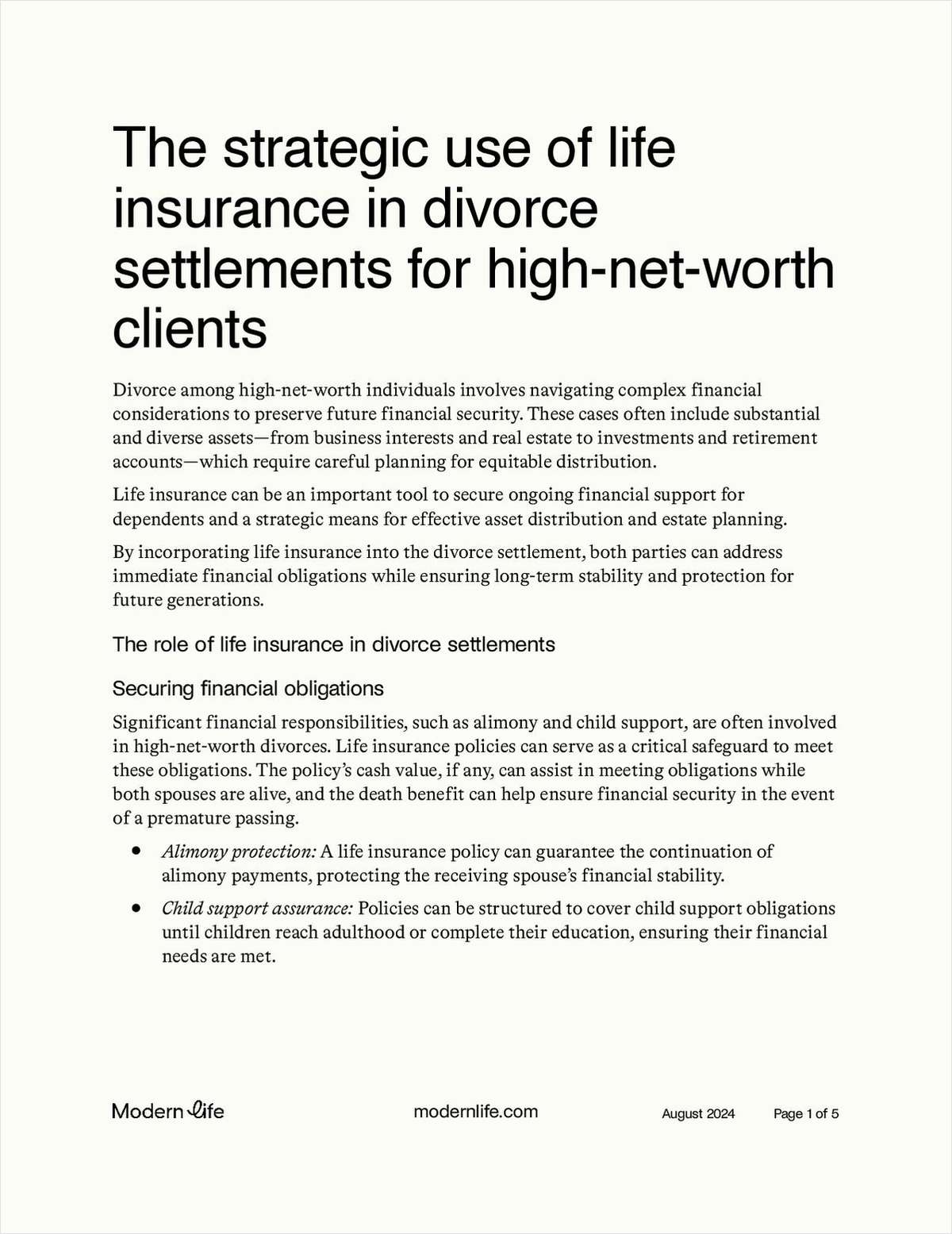Nearly every category in this statistical report covering the life insurance industry shows respectable growth–even if that growth is slow and steady.
Even in the one category where a decline was posted, individual annuity premiums, the decline for the top 200 companies was a scant 2%.
This article details some of the more prominent changes in each category.
Admitted assets
The top 200 companies as measured by admitted assets grew 6% to $4.37 trillion in 2005 from $4.1 trillion in 2004.
The top 10 companies grew 7% in 2005 to $1.4 trillion from $1.34 trillion and represented a third of the admitted assets for the top 200 in both 2005 and 2004.
Among the most notable increases in year-over-year totals was Prudential Retirement Insurance Annuity Company with a 130% increase to $52.7 billion in 2005 from $22.9 billion in 2004.
Other notable increases included Penn Treaty Network America with an 846% increase to $1.03 billion in 2005 from $108.6 million in 2004. State Life's admitted assets grew to $2.3 billion in 2005, a 443% increase over 2004′s $424.4 million.
Companies that experienced declines in admitted assets include Golden Rule Life, which saw a decline of 65% to $826 million in 2005 compared with 2004′s $2.4 billion, and Connecticut General Life, which declined 59% to $20.7 billion in 2005 from $50.7 billion in 2004.
Premium income
A 4% increase in premium income was posted by the top 200 companies, increasing the total to $517.9 billion in 2005 from $496.8 billion in 2004. The top 10 companies in this category also grew 4% to $155.6 billion in 2005 compared with $149.6 billion in 2004. In both 2005 and 2004, the top 10 represented 30% of the premium income of the total 200 companies.
Companies that posted large increases were Chase Life of New York, which went from $3.1 million in 2004 to $188.9 million in 2005, and American Heritage Life, which rose to $414.4 million in 2005, up from $24.3 million in 2004.
Several other companies also registered noteworthy increases, including Metlife Investors USA, up 414%; Metlife Investors Life, up 353%; First Metlife Investors, up 327%; AGL Life Assurance, up 290%; and Security Life of Denver, up 182%.
Net investment income
For the top 200, net investment income increased 6% to $156.5 billion in 2005 from $148.3 billion in 2004. The increase for the top 10 companies in the category was also 6%. The top 10′s $55.1 billion total represented 35% of the top 200′s total as did the $51.9 billion total in 2004.
Net gain after dividends
Net gains increased handsomely for the top 200 companies, growing 12% to $39.3 billion in 2005 compared with $34.5 billion in 2004. For the top 10 companies in the category, the growth rate was 8% to $12.1 billion from $11.1 billion. The top 10 represented 31% of the top 200′s total in 2005 compared with 32% in 2004.
Extremes dominated the results in this category with many companies posting large increases or decreases in 2005 over 2004. Large increases in net gain after dividends ranged from 172% for Liberty Life of Boston to 1,551% for Union Fidelity Life.
In the top 10, sizeable gains were posted by Prudential with 19%; United Healthcare with 20%; TIIA with 35%; AXA Equitable with 34%; and Aetna Life with 36%. Met Life, however, recorded an 89% decline.
Other large increases were posted by Valley Forge Life with 217%; Mony Life with 256%; Aurora National Life, successor of Executive Life Ins. Co., with 239%; Berkshire Hathaway Life with 273%; and William Penn Life of New York with 365%.
Large decliners included companies such as John Hancock Life and First Allmerica Finance Life.
Individual life premiums
Individual life premiums increased 4% in 2005 to $109.2 billion, up from $105.4 billion in 2004 for the top 200. The top 10 companies constituted a respective 43% and 42% in 2005 and 2004. In 2005, the top 10 companies had individual life premiums totaling $47.2 billion compared with $43.8 billion in 2004, up 8%.
Of the top 10, American Life posted the largest increase, growing 41% in 2005 to $12.4 billion from $8.8 billion. Another large increase was recorded by ING Life of America with a 17% increase to $2.6 billion in 2005 compared with $2.2 billion in 2004.



